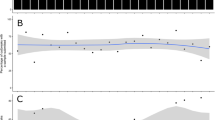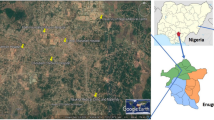Abstract
Objectives
To determine norovirus frequency, seasonal trends, disease severity and nosocomial acquisition in a region of Ireland.
Methods
From November 18th 2016 to November 18th 2017, all children up to 3 y of age who presented to Mayo University Hospital with vomiting and diarrhea, had their stool tested for norovirus and other viruses. Each week of the year was studied in relation to the total number of stool samples requested for norovirus testing, the number of positive stool samples, the calculated median of positive stool samples in two consecutive weeks and their calculated median percentage of positive stool samples in each two consecutive week period.
Results
During the study period, norovirus was the third leading cause of gastroenteritis (12%), norovirus G2 was the predominant strain; 61% were male; 56% older than 1 y, 78% of cases were severe. No nosocomial disease was detected. The fifth week of January was the week peak. Viral Co- infection was confirmed in four cases of which astrovirus was confirmed in two cases. Three seasons of norovirus gastroenteritis and four short episodes of norovirus infection were noted during 2016/2017.
Conclusions
Norovirus is a predominant cause of gastroenteritis. Co- infection with other viruses, mainly astrovirus may occur. Norovirus infections occur throughout the year with a peak in winter.


Similar content being viewed by others
References
Phillips G, Tam CC, Rodrigues LC, Lopman B. Prevalence and characteristics of asymptomatic norovirus infection in the community in England. Epidemiol Infect. 2010;138:1454–8.
Lambden PR, Caul EO, Ashley CR, Clarke IN. Sequence and genome organization of a human small round-structured (Norwalk-like) virus. Science. 1993;259:516–9.
Hutson AM, Atmar RL, Estes MK. Norovirus disease: changing epidemiology and host susceptibility factors. Trends Microbiol. 2004;12:279–87.
Vinjé J. Advances in laboratory methods for detection and typing of norovirus. J Clin Microbiol. 2015;53:373–81.
Siebenga JJ, Vennema H, Zheng DP, et al. Norovirus illness is a global problem: emergence and spread of norovirus GII.4 variants, 2001-2007. J Infect Dis. 2009;200:802–12.
Desai R, Hembree CD, Handel A, et al. Severe outcomes are associated with genogroup 2 enotype 4 norovirus outbreaks: a systematic literature review. Clin Infect Dis. 2012;55:189–93.
Widdowson MA, Cramer EH, Hadley L, et al. Outbreaks of acute gastroenteritis on cruise ships and on land: identification of a predominant circulating strain of norovirus- United States, 2002. J Infect Dis. 2004;190:27–36.
Lopman B, Vennema H, Kohli E, et al. Increase in viral gastroenteritis outbreaks in Europe and epidemic spread of new norovirus variant. Lancet. 2004;363:682–8.
Centers for Disease Control and Prevention (CDC). Norovirus activity-United States, 2006-2007. MMWR Morb Mortal Wkly Rep. 2007;56:842–6.
Tu ET, Bull RA, Greening GE, et al. Epidemics of gastroenteritis during 2006 were associated with the spread of norovirus GII.4 variants 2006a and 2006b. Clin Infect Dis. 2008;46:413-20.
Centers for Disease Control and Prevention (CDC). Emergence of new norovirus strain GII.4 Sydney-United States, 2012. MMWR Morb Mortal Wkly Rep. 2013;62:55.
Matsushima Y, Ishikawa M, Shimizu T, et al. Genetic analyses of GII.17 norovirus strains in diarrheal disease outbreaks from December 2014 to March 2015 in Japan reveal a novel polymerase sequence and amino acid substitutions in the capsid region. Euro Surveill. 2015;20:pii: 21173.
de Graaf M, van Beek J, Vennema H, et al. Emergence of a novel GII.17 norovirus – end of the GII.4 era? Euro Surveill. 2015;20:pii: 21178.
Lu J, Sun L, Fang L, et al. Gastroenteritis outbreaks caused by Norovirus GII.17, Guangdong Province, China, 2014-2015. Emerg Infect Dis. 2015;21:1240–20.
Lee CC, Feng Y, Chen SY, Tsai CN, Lai MW, Chiu CH. Emerging norovirus GII.17 in Taiwan. Clin Infect Dis. 2015;61:1762–4.
Chamberland RR, Burnham CA, Storch GA, et al. Prevalence and seasonal distribution of norovirus detection in stools submitted from pediatric patients for enteric pathogen testing. J Pediatr Infect Dis Soc. 2015;4:264–6.
Jacobsen S, Höhne M, Marques AM, Beslmüller K, Bock CT, Niendorf S. Co-circulation of classic and novel astrovirus strains in patients with acute gastroenteritis in Germany. J Infect. 2018;76:457–64.
Chhabra P, Payne DC, Szilagyi PG, et al. Etiology of viral gastroenteritis in children <5 years of age in the United States, 2008-2009. J Infect Dis. 2013;208:790–800.
Osborne CM, Montano AC, Robinson CC, Schultz-Cherry S, Dominguez SR. Viral gastroenteritis in children in Colorado 2006-2009. J Med Virol. 2015;87:931–9.
Hall AJ, Rosenthal M, Gregoricus N, et al. Incidence of acute gastroenteritis and role of norovirus, Georgia, USA, 2004-2005. Emerg Infect Dis. 2011;17:1381–8.
Zimmerman CM, Bresee JS, Parashar UD, et al. Cost of diarrhea-associated hospitalizations and outpatient visits in an insured population of young children in the United States. Pediatr Infect Dis J. 2001;20:14–9.
Dennehy PH. Viral gastroenteritis in children. Pediatr Infect Dis J. 2011;30:63–4.
Lee RM, Lessler J, Lee RA, et al. Incubation periods of viral gastroenteritis: a systematic review. BMC Infect Dis. 2013;13:446.
Public Health Agency of Canada. Adenovirus (serotypes 40 & 41). Pathogensafety data sheet-Infectious substances. 2010.
Connell J, Burke D, O’Gorman J; Cillian De Gascun Annual Reference Virology Report. UCD NVRL. 2015.
Tiemessen CT, Nel MJ. Detection and typing of subgroup F adenoviruses using the polymerase chain reaction. J Virol Methods. 1996;59:73–82.
Ruuska T, Vesikari T. Rotavirus disease in Finnish children: use of numerical scores for clinical severity of diarrhoeal episodes. Scand J Infect Dis. 1990;22:259–67.
Acknowledgements
The author wishes to express his gratitude to all children and carers that chose to contribute to this research. They are all at the heart and forefront of his work; without their help, this research would not have been completed.
Author information
Authors and Affiliations
Corresponding author
Ethics declarations
Conflict of Interest
None.
Additional information
Publisher’s Note
Springer Nature remains neutral with regard to jurisdictional claims in published maps and institutional affiliations.
Rights and permissions
About this article
Cite this article
Barsoum, Z. Pediatric Norovirus Gastroenteritis in Ireland: Seasonal Trends, Correlation with Disease Severity, Nosocomial Acquisition and Viral Co-Infection. Indian J Pediatr 88, 463–468 (2021). https://doi.org/10.1007/s12098-020-03540-4
Received:
Accepted:
Published:
Issue Date:
DOI: https://doi.org/10.1007/s12098-020-03540-4




